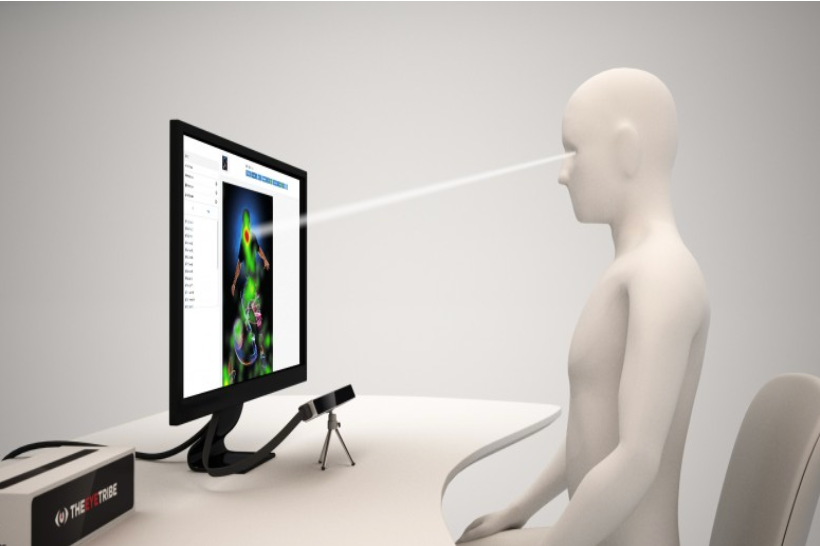
VOL. 3, No. 1
Although eye-tracking technologies such as Tobii-T120/TX and Eye-Tribe are steadily becoming ubiquitous, and while their appropriation in education can aid teachers to collect robust information on how students move their eyes when reading and engaging with different learning objects, many teachers of Luganda language are yet to gain experiences of utilizing these technologies in their teaching. This paper emerges from a semester-long (17 weeks) study which followed a Design Based Research (DBR) approach and deployed qualitative techniques to cultivate the experiences of 68 Luganda language teacher-trainees in utilizing different emerging Educational Technologies (ETs) in their teaching. The study was guided by Kolb's (1984) Experiential Learning Theory (ELT) and Reeves' (2006) model of conducting research in authentic e-learning contexts. During the study, trainees concretely experienced, abstractly conceptualized and made observational reflections about their own active experimentations of different ETs in teaching Luganda language. In this paper, we describe how we supported the trainees in conducting an active experimentation of Tobii-T120 to track how students moved their eyes when reading and engaging with learning objects on an emulated smartphone. Following the observational reflections, which the trainees made about their active experimentation, this paper also presents a discourse analysis thereof.
Most pedagogical opportunities, which are afforded by the mobile devices which educators and students use, especially for communication and information purposes, remain underexploited. Although some educators are now attempting to exploit such opportunities by deploying learning objects on mobile devices (Muyinda, 2010), studies on how students are reading and engaging with mobile (m-) learning objects remain scanty. Investigating how students read and engage with m-learning objects could inform educators making decisions about students’ information processing and cognitive development via mobile devices. Whereas emerging Educational Technologies (ETs) such Tobii-T120/TX and Eye-tribe can be valuable instruments in collecting robust data about how students read and engage with m-learning objects, many teachers of Luganda language are yet to gain experience of utilizing such ETs in their teaching (Kabugo, 2015). In order to respond to this challenge, we conducted a semester-long (17 weeks) study which followed a Design Based Research (DBR) approach and deployed qualitative techniques to cultivate the experiences of 68 Luganda language teacher-trainees in utilizing different emerging Educational Technologies (ETs) in their teaching. The study was guided by Kolb's (1984) Experiential Learning Theory (ELT) and Reeves' (2006) model of conducting research in authentic e-learning contexts. During the study, trainees concretely experienced, abstractly conceptualized and made observational reflections about their own active experimentations of different ETs in teaching Luganda language. In this paper, we describe how we supported the trainees in conducting an active experimentation of Tobii-T120 to track how students moved their eyes when reading and engaging with learning objects on an emulated smartphone. Following the observational reflections, which the trainees made about their active experimentation, this paper also presents a discourse analysis thereof. The rest of this paper is organized as follows: eye-tracking technologies, problem statement, theoretical underpinning, objective, research question, approach, analytic tool, presentation, analysis and discussion of findings, conclusion and reflections.
The foremost notion behind eye tracking-technologies is that eye operations shape and are recursively shaped by information processing and cognitive functioning (Bartels, 2008; Rayner, 1998). Emerging eye-tracking technologies such as Tobii-T60/T120/TX and Eye-Tribe work in such a way that they capture eye movements by reflecting infrared light into the user’s eyes and apply a mathematical model to determine the exact gaze point of the eye (Tobii, 2010; 2015, (The EyeTribe, 2016). Figure 1 demonstrates how eye-tracking technologies generally work.
The use of emerging eye-tracking technologies is on the rise especially in the business sector (Tobii, 2010). Many eye-tracking studies in the business sector aim at analyzing patterns of consumer’s visual attention on given products (Russell, 2005; Isomursu, Kuutti, & Väinämö, 2004). Patterns of consumers’ visual attention on given products are analyzed in terms of fixations and saccades (Tobii, 2010). Fixations refer to pauses of the eye movement on particular segments of information that interest the eye (Tobii, 2010). On the other hand, saccades refer to the rapid movements of the eye between fixations (Tobii, 2010). Fixations and saccades serve three main functions during reading: i) they place information of interest onto the reader’s fovea, ii) they post the image stationary onto the retina in spite of movements of the head, and iii) they prevent stationary objects from fading perceptually (Rayner, 1998).

Figure 1: How Eye-Tracking Technologies generally work (RAJTECHNEWS, 2015)
Although eye-tracking technologies are steadily becoming ubiquitous, and while their appropriation in education can aid teachers to collect robust information on how students move their eyes when reading and engaging with different learning objects, many teachers are yet to gain the experience of utilizing these technologies in their teaching to transform students’ learning practices.
In considering how to cultivate the experiences of Luganda language teacher-trainees in utilizing different ETs in teaching, we drew on Kolb's (1984) Experiential Learning Theory (ELT). According to Kolb (1984), individuals gain experiences with their objects or subjects of interest at four different sequential stages in the form of a cycle. Kolb’s four sequential stages of experience are: Abstract Conceptualization (AC), Concrete Experience (CE), Reflective Observations (RO), and Active Experimentation (AE). Each one of these sequential stages of experience is explained below, beginning with AE.
Figure 2 below illustrates the relationship between AC, AE, CE, and OR in form of a cycle.
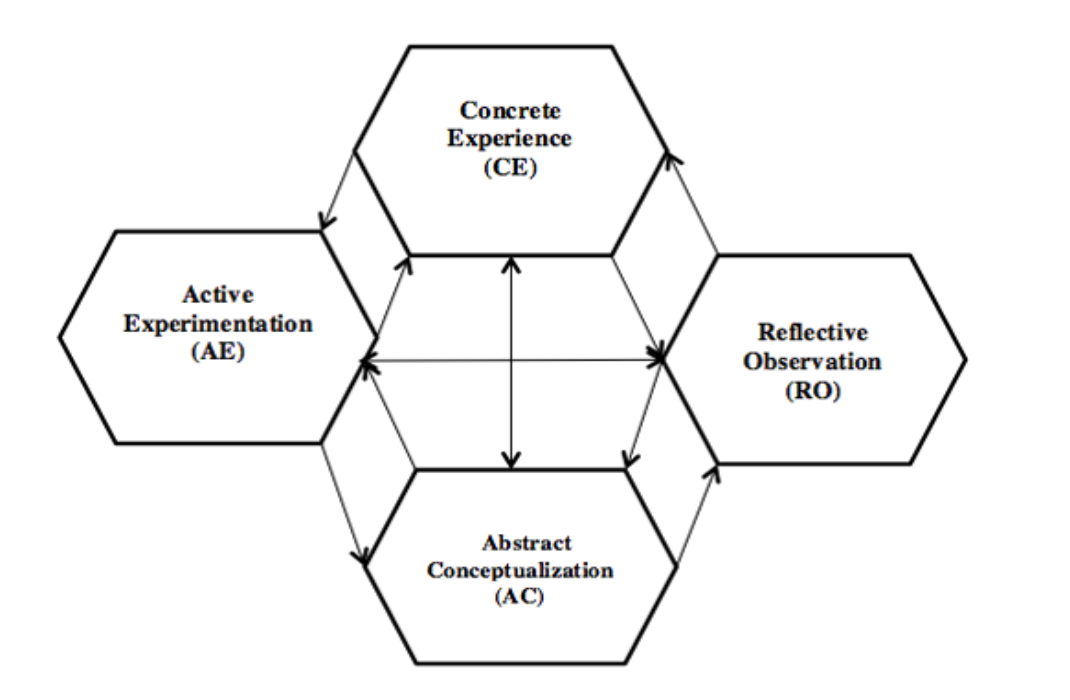
Figure 2: Adapted Version of Kolb's (1984) Experiential Learning Cycle (ELC)
Figure 2 above is an adapted version of Kolb's (1984) Experiential Learning Cycle (ELC). The figure illuminates learning as a product of experiences acquired at four different stages: AC, AE, CE and OR. Put together in a multidirectional style, AC, AE, CE, and OR form a spiral. Drawing on the above cycle, we describe in this paper, how we cultivated the experiences of Luganda language teacher-trainees in conducting an Active Experimentation (AE) of Tobii-T120 to track students’ eye-movement when reading and engaging with learning objects on a mobile device (smart phone). We also do a discourse analysis of the Reflective Observations (ROs), which the teacher-trainees made about their active experimentation.
This paper emerges from a semester-long (17 weeks) study which followed a Design Based Research (DBR) approach and deployed qualitative techniques to cultivate the experiences of 68 Luganda language teacher-trainees in utilizing different emerging Educational Technologies (ETs) in their teaching. The subsections that follow illuminate how a DBR approach was followed in the study.
Educational Design Based Research (DBR) has its origins in educators’ pragmatic desire to improve pedagogical practices not only in a practical sense, but also from an informed theoretical perspective (Johannesson & Perjons, 2012; Herrington, Reeves & Oliver, 2010). “[DBR is] is grounded in the practical reality of the teacher, from identification of significant educational problems, to the iterative nature of the proposed pedagogical solutions” (Herrington, Reeves, & Oliver, 2010).
In line with Herrington, Reeves, & Oliver (2010), Figure 3 below illustrates the focus of DBR:
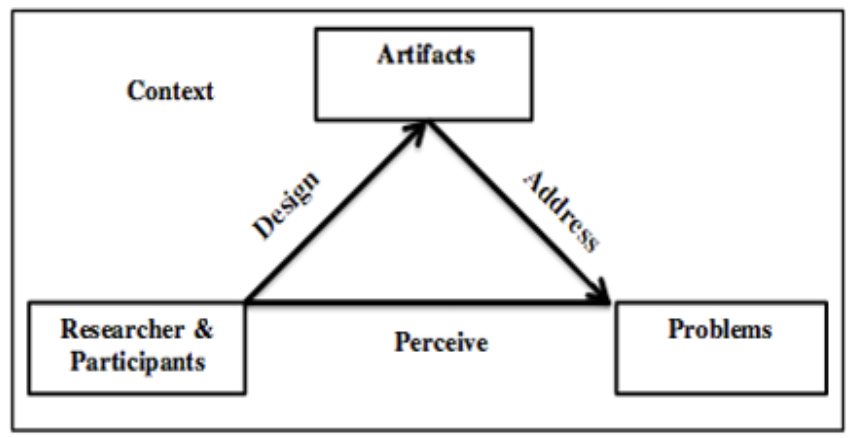
Figure 3: Focus Design Based Research (Adapted from Johannesson & Perjons, 2012)
Figure 3 above indicates that in Design Based Research, the researcher and participants collaboratively work to design innovative artifacts, which are utilized in addressing an existing or perceived problem. Studies which have followed a DBR approach to explore educational problems in Uganda in general and at Makerere University in particular, have yielded transformative results (Muyinda, 2010). While undertaking educational research using a DBR approach can be such a lengthy iterative process (Herrington, Reeves, & Oliver, 2010), the larger study was guided by Reeves' (2006) four-phase model (Figure 4) for conducting DBR in authentic e-learning contexts.
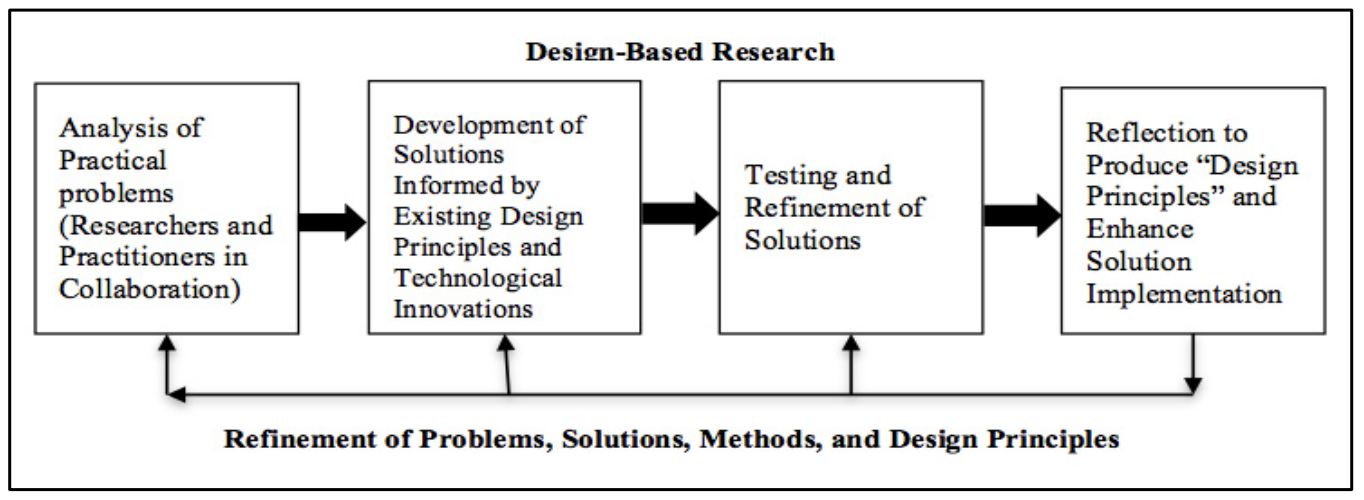
Figure 4: Reeves’ (2006) Model for Conducting DBR in Authentic E-learning Contexts
Identification and analysis of a significant educational problem is the foremost step in educational DBR (Herrington, Reeves, & Oliver, 2010). This stage begins with an observation or assumption that an existing teaching or learning practice is bad, and that such a problem can be addressed by exploiting some untapped educational opportunity through the design of an innovative pedagogical solution (Edelson, 2002). As a requirement in DBR, practitioners (participants) should be involved right from this first phase of the study so that the full extent of the problem is known by all, rather than the problem being interpreted and addressed solely by the researchers (Herrington, et. al, 2010). The participants of this study were education practitioners in the making. These were third-year Luganda Language and Education (LLE) teacher-trainees (2012/2013) of Makerere University. Before commencement of the larger study, a call was made inviting them to participate in a semester-long (17 weeks) blended learning course aimed at cultivating their experiences of utilizing ETs in teaching. Out of the target group of 78 trainees, 68 responded to the call. All the 68 who responded to the call were accepted to participate in the study. None of the participants had prior experiences of utilizing eye-tracking technologies for teaching and learning purposes.
After analyzing a practical educational challenge, the next step in DBR is to use the most affording educational technology to design a solution informed by existing pedagogical principles (Reeves, 2006). In response to the challenge stated before, this study cultivated the experiences of 68 teacher-trainees in utilizing more than fifty (50) different ETs in their teaching. In this paper we report on how we supported the teacher-trainees in conducting an active experimentation of Tobii-T120 to track how students moved their eyes and engaged with m-learning objects on a smartphone.
A number of other eye-tracking technologies such as Tobii-T60/TX and Eye-Tribe are steadily becoming ubiquitous. In this study, Tobii-T120 was utilized because it was the only eye-tracking technology the researchers had access to at the time they commenced the study.
In this study, we were guided by the theoretical principles of Kolb's (1984) Experiential Learning Cycle. Trainees concretely experienced, abstractly conceptualized and made observational reflections about their own active experimentations of Tobii-T120 in tracking the eye-movement of students of reading and engaging with e-learning objects on an emulated mobile device (smartphone).
Emulated devices look and work more or less like real physical devices. Emulated devices serve as test-beds for new applications that are to be installed on real physical devices (Modelica Association Project, 2014). It is economically important to test the functionality of an application on an emulated device before such an application is actually installed as a stand alone application on a physical device (Modelica Association Project, 2014). A number of web-based application development platforms now exist, providing options for software developers to test the functionality of their software via emulated devices. In this study, participants were guided to utilize http://mob.is.it to develop e-learning objects for deployment on different smartphones.
Each one of the 11 groups of teacher-trainees chose an excerpt of a chapter in a Luganda language literary text called Zinunula Omunaku. Zinunula Omunaku is one of the most widely read novels in Luganda language. “Zinunula Omunaku…” is a proverbial name in Luganda language, which is completed as “…Lugaba azitunga kiro”. This Luganda proverb is loosely translated as: “The [money]) which rescues the poor is stitched (made) by God at night”. As a pre-colonial novel, Zinunula Omunaku recounts the life of an orphaned boy who, through all sorts of trials in life, triumphs, becomes famous and marries Mirembe, one beautiful daughter of a great village chief (Kawere, 1982). After selecting different excerpts from Zinunula Omunaku, each of the eleven (11) groups of teacher-trainees was guided to use http://mo.is.it to convert its excerpt into an e-learning object for deployment on different smartphones. Figure 5 below is a sample of e-learning object that was deployed on a Samsung Galaxy SII.
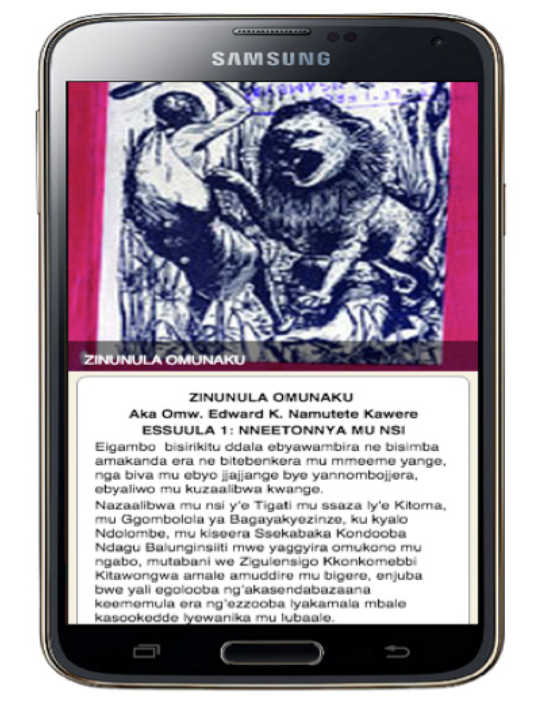
Figure 5: Excerpt of an E-learning Object Deployed on an Emulated Samsung Galaxy SII
After converting different excerpts of Zinunula Omunaku into e-learning objects deployable on an emulated smartphone, the emulated smartphone was displayed on an interactive whiteboard (see Figure 6).
After displaying the emulated smartphone and the e-learning objects thereof on an interactive whiteboard, trainees selected nine (9) students (five females, and four males) to read and engage with the e-learning content that was being displayed.
As the students read and engaged with the e-learning content that was being displayed on the interactive whiteboard, their eye-movements were tracked using Tobii-T120 eye-tracker. Although each one of the nine students was alerted to the fact that s/he was being recorded as s/he read and engaged with the content on the interactive screen, no one was informed that the teacher-trainees were specifically interested in tracking their eye-movements. After tracking students’ eye-movements, trainees then viewed the video-recordings using Tobii Studio 2.0.x. The video recordings indicated the gaze plots, i.e., the fixations and saccades in students’ eye-movements (see Figure 6 above).
After viewing the gaze plots, i.e., the fixations and saccades in students’ eye-movements, trainees were asked to make observational reflections about their active experimentations. Trainees posted their observational reflections on both YouTube, and Diigo (Diigo is a Social bookmarking and discussion platform), where the video-recordings of students’ eye-movements were posted as closed / protected online learning artifacts.
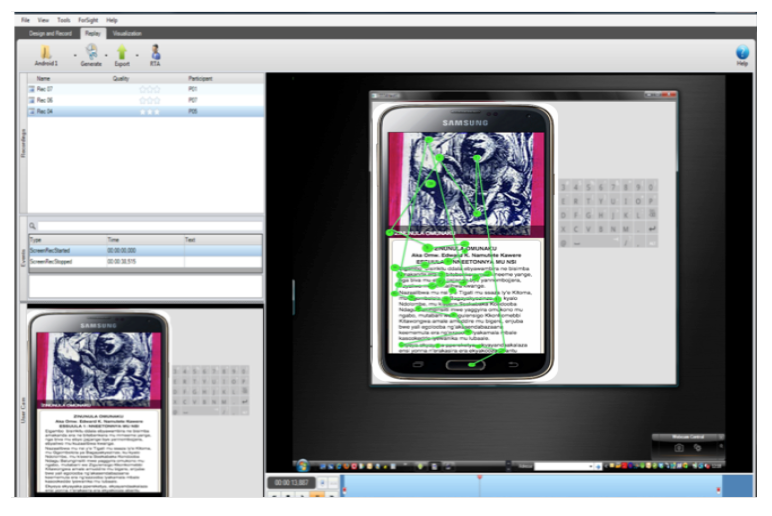
Figure 6: Gaze Plots of the Recordings of Students’ Eye-Movements
After development of the solution informed by existing design principles, the next stage of DBR is to test and refine the solution. At this phase of DBR, the researcher analyses the appropriateness of the designed solution for addressing the challenge identified (Reeves, 2006). Since the solution is usually in the form of a defined technology-mediated learning artifact, it becomes important for the researcher to analyze such learning artifacts, which are a product of participants’ direct experiences (Reeves, 2006). In the next subsection, we explain how we analyzed the observational reflections, which the trainees made about their active experimentation.
In this study, the observational reflections, which the trainees made about their active experimentations, were analyzed using Discourse Analysis (DA). Discourse Theory (DT) states that spoken or written discourses (texts and artifacts) embody and serve to perpetuate the experiences of their designers (Fairclough, 1992). A number of frameworks have been suggested to guide researchers utilizing discourse analyses to analyze the discourses (text and artifacts) of their participants. This study utilized Fairclough’s (1992) framework for analyzing discourses. According to Fairclough (1992), every discourse instance has three dimension: a) the spoken or written text (artifact) itself, b) the process of interaction, i.e., re-production and consumption of such text / artifact and c) the context, i.e., the socio-cultural, political and economic environment of a) and b). Fairclough (1992) contends that these three discourse instances are analyzable at three levels namely: a) description, interpretation and explanation. Fairclough’s (1992) framework for analyzing discourses is illustrated in Figure 7.
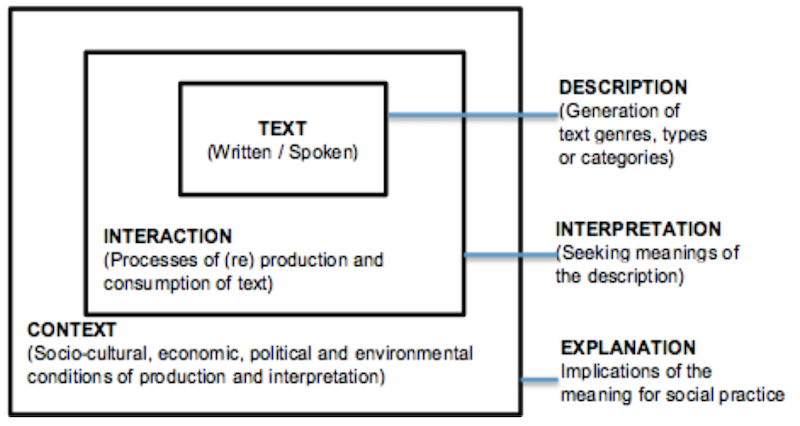
Figure 7: Fairclough’s (1992) Three-Dimensional Framework for Analyzing Discourses
When deploying DA, genres and their discursive types (interpretations and explanations) are generated from texts or artifacts provided (Roode, Speight, Pollock, & Webber, 2004). In his work, Ng’ambi (2008) provided a demonstrable example of how to utilize DA to analyze students’ online learning artifacts. According to Ng’ambi (2008):
The analysis of text genres and discursive types of online postings has potential to enhance teaching and learning experiences of students...[In addition], [C] DA of anonymous postings provide[s] insight into social practices of students and, in particular, highlight[s] the tension between perceptions of inflexibility of traditional teaching practices and student demands for flexible learning…[C] DA, as described in this article, could be useful in analyzing e-mail communications, short message service (SMS) interactions, Web blogs, and podcasts.
There is however, usually a subjective judgment in generating genres and discursive types from texts / artifacts (Roode, et. al, 2004). Accordingly, in this study, we noted that the genres and the discursive types, which we unraveled from trainees’ learning artifacts, are not independent of our own subjectivity. In order to compensate for such subjectivity, we present our analysis in a tabular format. Such a format can help readers of our work to construct independent genres and discursive types (columns; 1 and 2) by referring back to the source texts / artifacts in each table. It should be noted that the source texts that are presented in each one of the tables were translations of the original responses (observational reflections), which the trainees posted on either Diigo or YouTube in Luganda language. Although the trainees made more than 68 postings, for the purposes of brevity, we in this paper, translate, present, describe, interpret, explain and discuss seven of the most compelling artifacts.
Table 1: Translation and Analysis of Reflective Observation 1 We observed that students spent varying times (an average of 2.5 minutes) until they scrolled down to view and read the rest of the contents on the screen. However, all of them tended to fixate at the segments of the first than the subsequent paragraphs of the excerpt. |
||
Description |
Interpretation |
Explanation and Implication |
Trainees observed that students gave unequal reading and processing time for different segments of the excerpt. They also noted that students fixated more at the first than the subsequent segments of the excerpt. |
When cognitive load increases as a result of reading and engaging with additional segments of a text, individual attention and fixation at subsequent segments of the text / excerpt diminishes. |
It presents the need for educators to regulate both amount of quality of information they require of students to read and engage with. It should be interesting to carry forward a search on how rapid information access over ubiquitous and emerging mobile devices is qualitatively affecting cognitive processing in different learning disciplines. Such studies would inform debates in the emerging field of Technology, Learning and Cognition (Cognition and Technology Group, 1990). |
Table 2: Translation and Analysis of Reflective Observation 2 In the excerpt, students fixated more at the image than at the words. Probably, this is what helped them to valiantly interpret the image, and to answer questions, which followed the text. |
||
Description |
Interpretation |
Explanation / Implication |
Trainees observed that students fixated more at the image than at the words. They assumed that fixations were important in helping students to extract “practical and meaningful information” needed for further cognitive processing. When students fixated at the image, it helped them to intrepidly interpret the image and to answer questions that followed the text. |
Trainees’ observation confirms that objects can be identified more easily than words (Walker, Findiay, Young, & Lincoln, 1996; Walker & Young,1996). However, some studies such as Nelson and Loftus’ (1980) suggest that there is a limit as to how far from objects, a reader / viewer can extract useful information. Useful information” is to be interpreted as that information which invokes further cognitive processing. It may be difficult to extract useful information from objects that are located far away from 2.6° of fixation (Nelson & Loftus, 1980). |
Educators wishing to utilize emerging eye-tracking technologies such as Tobii T120 to track students’ eye-movements should be mindful of both the nature, and the usefulness of the information that they want their students to engage with. Both the nature (images, texts, multimedia), and the usefulness of the information significantly affect readers’ eye-movements. Eye-movements have an effect on a reader’s further processing of cognitive tasks (Rayner, 1997). |
Table 3: Translation and Analysis of Reflective Observation 3 When asked to talk about the image in the excerpt, before touching the interactive screen to scroll down, the student did not have as much to say. When the student touched the interactive screen and scrolled down to view the entire image and its corresponding text, he said much more). |
||
Description |
Interpretation |
Explanation / Implication |
Trainees observed that students invariably moved their eyes whenever the excerpt / text was wiggled. |
Wiggling of objects and texts prompts readers / viewers to dynamically and purposefully move their eyes (Rayner, 1998). Dynamic and purposeful movement of eyes helps readers / viewers to intrepidly describe objects and texts in motion (Rayner, 1997). However, other studies have noted that if an object rapidly wiggles, it can negatively affect an individual’s perceptual span and cognitive functioning (Chincotta, Hytina, & Underwood, 1997). |
Educators need to make careful balance between designing static and wiggling objects for instruction. Static or wiggling, objects and texts can negatively affect students’ perceptual span and cognitive functioning (Chincotta, Hytina, & Underwood, 1997; Walker, Findiay, Young, & Lincoln, 1996). |
Table 4: Translation and Analysis of Reflective Observation 4 We did not only aim at understanding how our students viewed the information on the interactive screen but we also wanted to guide them to actively read, engage, and interpret such information. In order to achieve this, we provided them with an audio narration of what they were viewing. As evidenced latter in the playbacks of our vide- recordings, the narration guided our students to view the excerpt in fairly systematic manner. |
||
Description |
Interpretation |
Explanation / Implication |
Trainees observed that when the students were provided with an audio narration, they viewed and read the excerpt in a fairly systematic manner. |
When individuals view objects as they listen to their corresponding audio narrations, they quickly move their eyes to specific elements of objects with the most closely related meanings. |
Educators may not only need to design supportive strategies for guiding students to view and engage with learning objects in a fairly systematic manner, but also investigate how such strategies affect students’ cognitive processing. It can also be pedagogically edifying to establish whether systematic view of learning objects necessarily leads to increased engagement and higher order cognitive processing. |
Table 5: Translation and Analysis of Reflective Observation 5 We tasked students to respond to two different questions. The first question required students to mention the author of the literary text they were reading, while the second question required students to explain how the object in the excerpt summarized and conveyed the meaning of the entire literary text with which they were engaging. We observed that students fixated much longer at the object (image) in the excerpt when answering the latter than the former question. |
||
Description |
Interpretation |
Explanation / Implication |
Trainees observed that students fixated more at complex than at simple learning challenges. |
As expected, complex learning challenges invoke more and longer fixations than simple learning challenges. This observation aligns with that of Chincotta, Hytina, & Underwood (1997). In their study on how students read words of varying lengths, Chincotta, et, al noted that students tended to fixate on longer and complex than shorter and monosyllabic words. |
Educators need to intrepidly vary the complexity of the learning tasks that they assign to students. |
Table 6: Translation and Analysis of Reflective Observation 6 Although the students we selected did not appear to have visual impairments, we noticed that some of them were moving their eyes and indeed heads in saccadic (somewhat still) manner. |
||
Description |
Interpretation |
Explanation / Implication |
Trainees suspected that some of their student had behavioral challenges in reading. |
Both behavioral challenges and visual disorders / impairments significantly affect reading and cognitive processing. Individuals with such deficits tend to view and engage with objects as they move their heads in saccadic manner (Walker & Findlay, 1996; Findlay & Gilchrist (1997). |
Educators need to be mindful of the characteristics of movement of students with both behavioral challenges and visual disorders / impairments. With progression in technology and cognitive neuroscience, it should become easy for educators to support students with such behavioral, physical and cognitive deficits (Rayner & Morris, 1990; Walker, Findlay, Young, & Lincoln, 1996; Walker & Young,1996). |
Table 7: Translation and Analysis of Reflective Observation 7 One of the limitations of our experimentation was that we did not give an opportunity to our students to directly read and engage with the excerpt on physical mobile phones. Instead of using a physical mobile phone, we utilized an emulated phone. This was in part, because we had not yet fully developed our learning content into a stand-alone m-learning application that could be installed directly on physical mobile phones. |
||
Description |
Interpretation |
Explanation / Implication |
Trainees observed that the experimentation they conducted could not provide them with feedback on how their students would move their eyes if they had read and engaged with the information provided on physical (three-dimensional) mobile phones. |
Although conducting several different experimentations could have been difficult and costly, they could probably have yielded slightly different results. |
Other possible experimentations that trainees could conduct include: mounting the mobile device in a bracket on a stand under the table so as to film both the device and the students’ interactions with it. In this type of experimentation, students would not see the device directly, but would instead be presented with the streamed video on the screen of a Tobii T‐series Eye Tracker (Tobii, 2010). |
According to Reeves (2006), the last phase of DBR is that of making reflections and conclusions purposed at producing instructional design or pedagogical principles and implications. In this section, we make a recap of reflective observations, which the teacher-trainees made about their active experimentation of Tobii-T120 to track the eye-movements of students who were reading and engaging with learning objects on mobile phones:
Finally, although it may not be appropriate to make generalizations based on the small data sets that we collected in this study, our analysis of teacher-trainees’ reflective observations about their active experimentation of Tobii-T120 to track the eye-movements of students who were reading and engaging with learning objects on mobile phones suggest a very strong relationship between eye-movements, information processing and cognitive development. This observation aligns with that of Bartels (2008) and Rayner (1998) who assert that eye movements shape and are recursively shaped by information processing and cognitive functioning.
Acknowledgement
This paper emerged from a larger PhD study that was funded by the Swedish International Development Agency (Sida) through the Embassy of Sweden in Kampala (Uganda), and the Directorate of Research and Graduate Training (DRGT) at Makerere University.
Authors:
David Kabugo is a Lecturer, Department of Humanities and Language Education School of Education, Makerere University. E-mail: kabugodavids@gmail.com
Paul Birevu Muyinda is a senior lecturer in the Department of Open Distance and e-Learning at Makerere University. E-mail: mpbirevu2013@gmail.com
Fred Masagazi Masaazi is an Associate Professor, Department of Humanities and Language Education, School of Education, Makerere University. E-mail: principal@cees.mak.ac.ug
Anthony Muwagga Mugagga is an Associate Professor, Department of Educational Foundations and Curriculum Studies, School of Education Makerere University. E-mail: amugagga@gmail.com
Mathias Bwanika Mulumba is a senior lecturer in the Department of Humanities and Language Education at Makerere University. E-mail: mbwanika@cees.mak.ac.ug